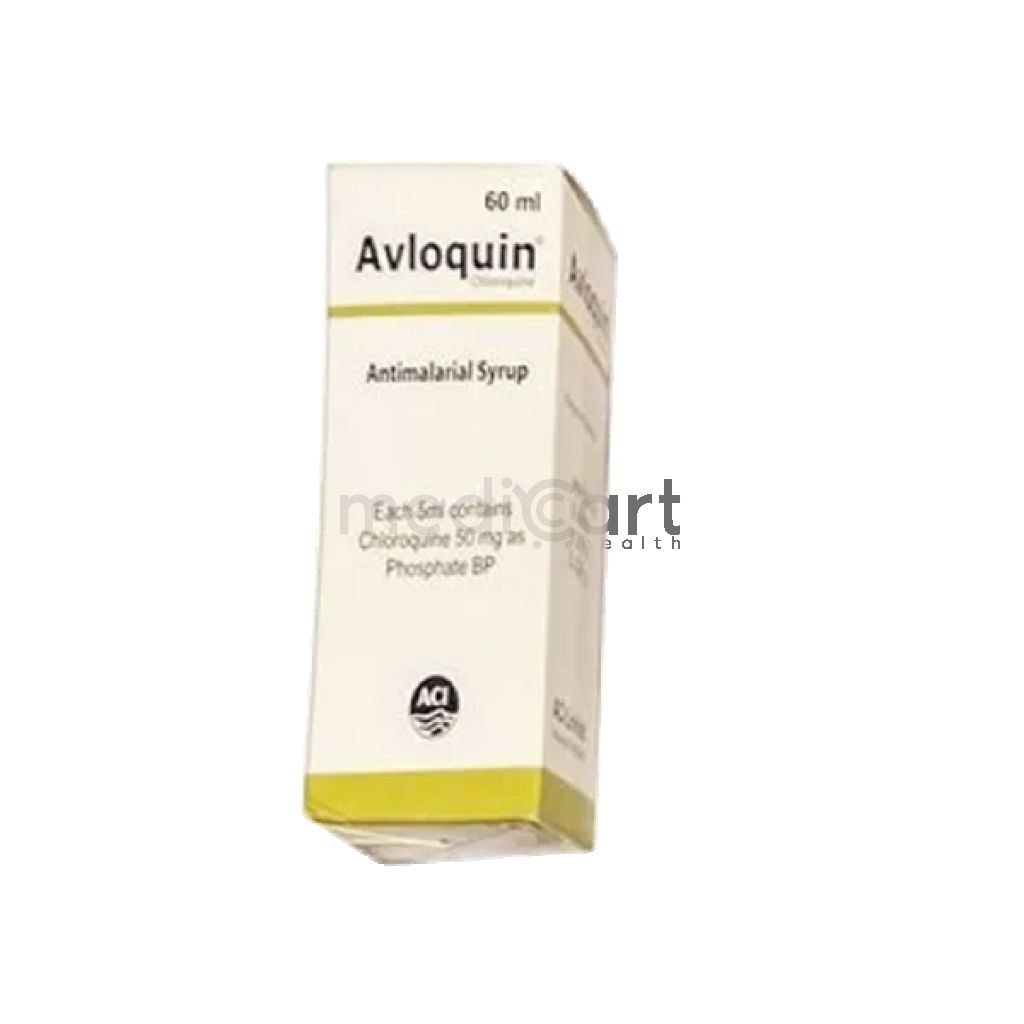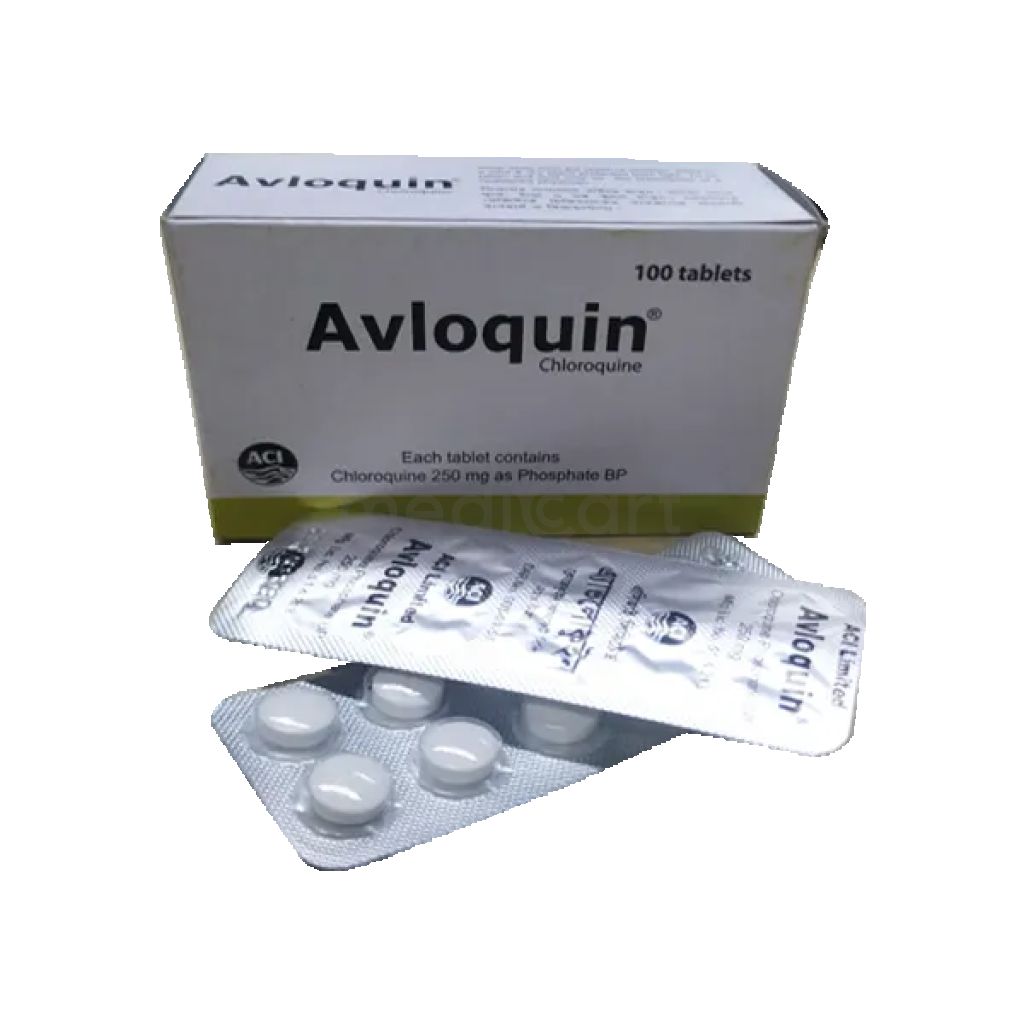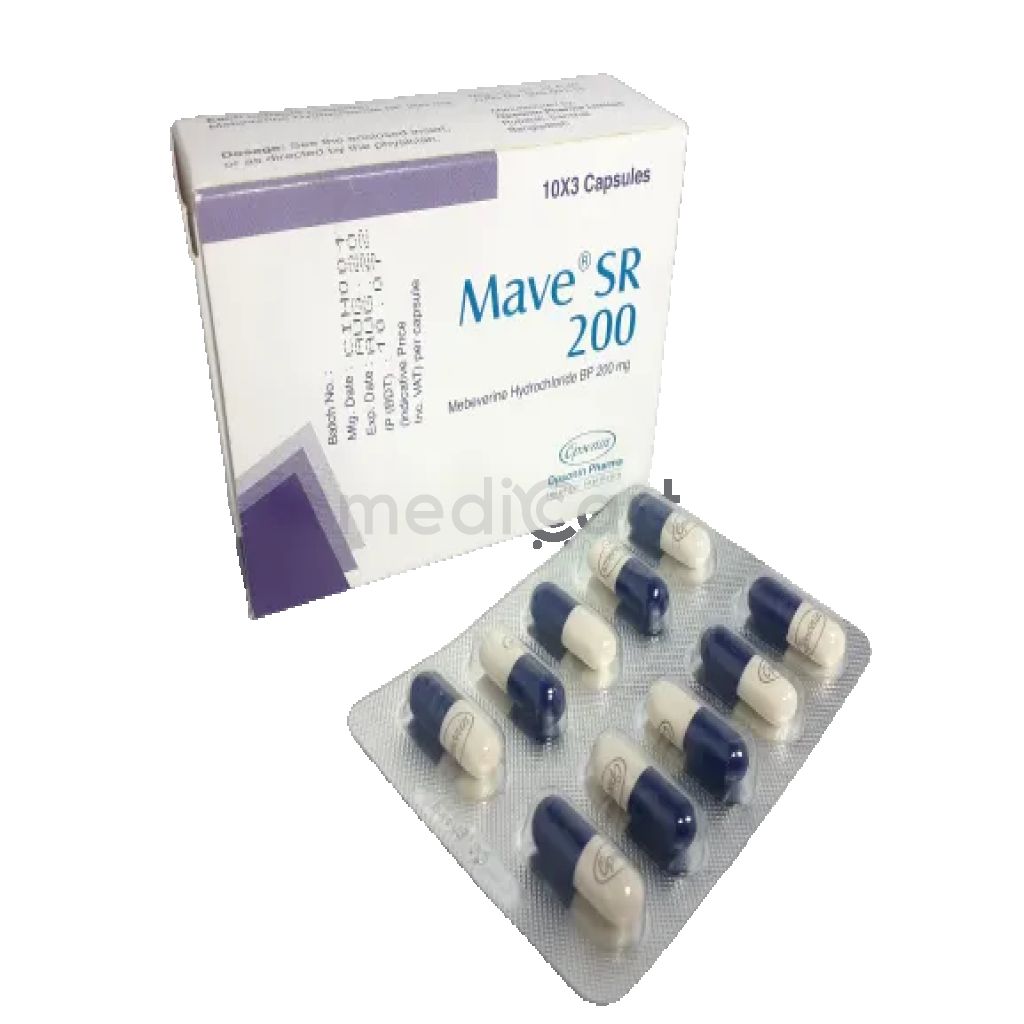

Avloquin 60ml Syp. 125mg/5ml
Syrup* Delivery will be done in Dhaka city only.
More Information About - Avloquin 60ml Syp. 125mg/5ml
Description
Generic Name
Chloroquine Phosphate
Precaution
Psoriasis, diseases of the haematopoietic or CNS systems, myasthenia gravis, hepatic or renal impairment, G6PD deficiency, epilepsy, childn. Pregnancy and lactation. Slow infusion is used upon IV admin to prevent cardiotoxicity. Lactation: enters breast milk/not recommended
Indication
Rheumatoid arthritis, Malaria, Systemic lupus erythematosus, SLE, Amoebiasis
Contra Indication
Hypersensitivity, known or suspected resistant P. falciparum infection, porphyria, retinal damage, concurrent hepatotoxic drugs.
Dose
N/A
Side Effect
Retinopathy, hair loss, photosensitivity, tinnitus, myopathy (long-term therapy). Diarrhea, Loss of appetite, Nausea, Stomach cramps, Vomiting, Psychosis, seizures, leucopenia and rarely aplastic anaemia, hepatitis, GI upsets, dizziness, hypokalaemia, headache, pruritus, urticaria, difficulty in visual accommodation. Potentially Fatal: Cardiac and respiratory arrest, CV collapse, convulsions, coma.
Pregnancy Category
Name : Not Classified
Description
FDA has not yet classified the drug into a specified pregnancy category.Mode of Action
Chloroquine is used for malarial prophylaxis (as a suppressive) and in managing acute attacks of malaria. It is highly active against erythrocytic forms of P. vivax, P. malariae and P. falciparum. It influences Hb digestion by increasing intravesicular pH in malaria parasite cells and interferes with the nucleoprotein synthesis of the patient. It is also effective in extra intestinal amoebiasis. In RA chloroquine and more effectively hydroxychloroquine have a disease-modifying effect.
Interaction
Concomitant therapy with phenylbutazone predisposes to dermatitis, antagonises effect of neostigmine and pyridostigmine, reduces bioavailability of ampicillin. Cimetidine inhibits metabolism of chloroquine raising plasma levels. Potentially Fatal: Increased risks of inducing ventricular arrhythmias with halofantrine or other arrhythmogenic drugs eg, amiodarone. Increased risk of convulsions with mefloquine. Antacids reduce absorption of chloroquine hence admin should be separated by 4 hrs. Rarely Stevens-Johnson syndrome, when administered with pyrimethamine/sulphadoxine. Increased toxicity with quinacrine
Pregnancy Category Note
Pregnancy There are no adequate and well-controlled studies evaluating the safety and efficacy of chloroquine in pregnant women; usage during pregnancy should be avoided except in prophylaxis or treatment of malaria when benefit outweighs potential risk to fetus Lactation Because of the potential for serious adverse reactions in nursing infants from chloroquine, a decision should be made whether to discontinue nursing or to discontinue drug, taking into account potential clinical benefit of drug to mother
Adult Dose
Malaria Prevention: 500 mg (300 mg base) PO once/week Non-chloroquine-resistant 1 g (600 mg base) PO, THEN 500 mg (300 mg base) PO 6-8 hours later, THEN 500 mg (300 mg base) PO at 24 hours & 48 hours after initial dose Amebiasis, Extraintestinal 1 g (600 mg base) PO qDay for 2 days, THEN 500 mg (300 mg base) qDay for 14-21 days
Child Dose
Malaria Prophylaxis: 5 mg/kg PO q1Week Treatment 1st dose: 10 mg/kg PO x1 dose 6 hours after 1st dose: 5 mg/kg PO qDay x2 days
Renal Dose
Renal impairment: May need to reduce dose in prolonged treatment.
Administration
Should be taken with food.
Disclaimer
The information provided herein are for informational purposes only and not intended to be a substitute for professional medical advice, diagnosis, or treatment. Please note that this information should not be treated as a replacement for physical medical consultation or advice. Great effort has been placed to provide accurate and comprehensive data. However, Medicart along with its authors and editors make no representations or warranties and specifically disclaim all liability for any medical information provided on the site. The absence of any information and/or warning to any drug shall not be considered and assumed as an implied assurance of the Company.






